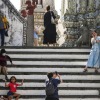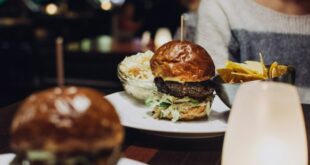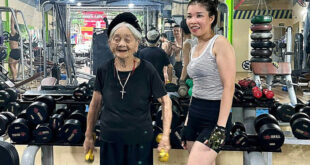Foreign photographers captured the daily lives of Cho Lon residents, Ho Chi Minh City’s Chinatown, in the early 20th century, featuring images of street vendors and rickshaw pullers.
 |
|
These feature in a book titled “Urban Architecture and Landscape of Saigon-Cho Lon: Then and Now” by Nguyen Duc Hiep, Tim Doling and Vo Chi Mai, which draws from various early 20th century magazines and archives. It was published by Ho Chi Minh General Publishing House in July and reissued in August with a print run of 1,000 copies. Hiep hopes the work will help readers explore various aspects of southern Vietnam’s cultural, social and urban architectural development since the late 19th century. |
 |
|
The scene shows street vendors selling food on the sidewalk in front of a grocery store. This location is now the corner of Tran Ngu Lao and Pham Don Streets in District 5. According to the book, Cho Lon area was formed between the 17th and 19th centuries when ethnic Chinese and their relatives settled here and built a bustling area. In the French colonial time, Cho Lon was a town distinct from Saigon. The two were combined in 1956. Currently, the Cho Lon area is in Ho Chi Minh City’s Districts 5 and 6. |
 |
|
A rickshaw puller in front of Tue Thanh Assembly Hall, also known as Thien Hau Temple, one of the oldest Chinese temples in the area, on Nguyen Trai Street (District 5) now. The site remains a popular tourist attraction. |
 |
|
The facade of the Tue Thanh Assembly Hall in 1909. |
 |
|
A row of street houses. According to the authors, these may be buildings constructed by Hua Bon Hoa (1845-1901), also known as “Uncle Hoa.” He was a Chinese immigrant in southern Vietnam who amassed a vast fortune with over 20,000 single-fronted properties across the city. It is said that he was the fourth wealthiest person in the south at the time. People still recount the famous saying: “First Sy, Second Phuong, Third Xuong, Fourth Hoa” when referring to the four wealthiest tycoons of old Saigon. |
 |
|
A street scene on Rue de Canton, now Trieu Quang Phuc Street (District 5). The book notes this was a central area in Cho Lon with the famous Nhi Thien Duong Pharmacy opening in the early 20th century. |
 |
|
A view of houses on Trieu Quang Phuc Street facing the Tau Hu Canal. |
 |
|
The opera house on Rue de Paris, now Phung Hung Street (District 5), was a venue for hat boi, or Vietnamese classical opera, which dates back to the era of the Ly and Tran dynasties (11th – 14th centuries). In the 1970s the building was repurposed as a treasury office and now serves as the District 5 tax office. |
 |
|
Fabric shops run by Indians on Rue des Jardins, now Nguyen Thi Street (District 5), a bustling shopping area in old Cho Lon. |
 |
|
A busy shopping area on Nguyen Thi Street. |
 |
|
A lively scene at Mong, one of the city’s oldest bridges and which spans the Tau Hu – Ben Nghe Canal connecting Districts 1 and 4. It was built by the French maritime company Messageries Maritimes in 1893-94 with construction carried out by Levallois Perret, a company once led by French civil engineer and architect Gustave Eiffel. |
 |
|
The Saigon – My Tho railroad station at the beginning of the 20th century, now the 23/9 Park (District 1). The first station was Cho Lon Moi, near An Dong Market (District 5) and the last one was My Tho. Built in 1881, the country’s first rail line transformed local transportation habits which were previously reliant on horses and boats. In his book “Saigon of Yesteryear,” scholar Vuong Hong Sen records some popular verses and folk songs related to this railroad line. |
Photos courtesy of Ho Chi Minh General Publishing House
- Reduce Hair Loss with PURA D’OR Gold Label Shampoo
- Castor Oil Has Made a “Huge” Difference With Hair and Brow Growth
- Excessive hair loss in men: Signs of illness that cannot be subjective
- Dịch Vụ SEO Website ở Los Angeles, CA: đưa trang web doanh nghiệp bạn lên top Google
- Nails Salon Sierra Madre
 VnExpress News The News Gateway of Vietnam
VnExpress News The News Gateway of Vietnam





